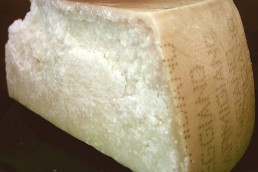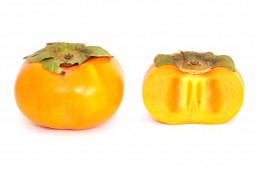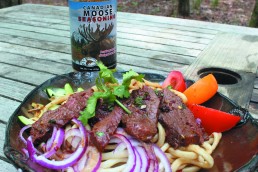Parmesan Crappies & Rocket Salad
SHARE THIS POST
Can you speak Italian?
Sure you can. Say “Parmigiano-Reggiano.”
You’ve just named the “King of Cheeses.” Parmesan—what we usually call it in America—is actually a prohibited trading-name in the European Economic Area under European law. Outside the EU, the name “Parmesan” can legally be used for cheeses similar to Parmigiano-Reggiano.
Parmigiano-Reggiano is a hard, granular cheese made from unpasteurized cow’s milk. The whole milk of the morning milking is mixed with the naturally skimmed milk (keeping milk in large, but shallow tanks to allow cream to separate) of the previous evening’s milking, resulting in a part skim mixture. Traditionally, cows have to be fed only on grass or hay. The curds are then pressed into wheel shapes and put into a brine bath to absorb Mediterranean sea salt for 20–25 days. After brining, the wheels and are then transferred to shelves in an aging room where each is cleaned every week and flipped to the other side. The Italian product is aged from one to three years.
A true Parmigiano-Reggiano cheese is hard with a sharp, complex fruity, nutty taste with a strong savory flavor. This cheese is usually grated over pasta, stirred into soups and even eaten alone or roasted as a snack. Slivers and chunks of the hardest parts of its crust are sometimes simmered in a soup. It’s often shaved or grated over salads. Cheeses imitating Parmigiano-Reggiano—those not made in approved Italian provinces—are called Parmesan or Italian hard cheese by producers to avoid legal issues.
Four of our recipes this month contain Parmesan cheese that ar fried or baked with bass, crappies or catfish.
Parmesan Crappies
4 fish fillets
1 ounce Parmesan cheese, grated
1/2 cup buttermilk
4 tablespoons all-purpose flour
Dash onion powder
Dash garlic powder
Salt and pepper to taste
2/3 cup cornmeal
Canola oil
Combine the buttermilk and Parmesan cheese in a small bowl. In another bowl, mix flour, onion powder, garlic powder, salt and pepper. Spread the dry cornmeal onto a plate. Preheat skillet with a tablespoon of canola oil. Coat each fillet with flour mixture, dip into the buttermilk mixture and then coat with the cornmeal. Cook in skillet until both sides are golden brown.
Oven-baked Parmesan Fillets
10-12 fish fillets
Butter (or oil spray)
1 cup milk
3/4 cup garlic and herb panko breadcrumbs
1/4 cup Parmesan cheese, grated
Preheat the oven to 375 degrees. Cover cookie sheet with aluminum foil, shiny side up, and coat with butter or cooking spray. Dip fillets in milk. Dredge fillets in breading mixture, coating both sides. Place on foil. Bake for 18-20 minutes or until the fish flakes with a fork.
Rocket Salad (or Arugula)
Eruca sativa is popular for a choice of salad. It’s native to the Mediterranean Sea, and “my garden.” It’s got a “whang” of a taste and spikes a salad’s potency. Depending on the country, it’s called “garden rocket” or “rocket.” Arugula, the common name used in the U.S. and Canada, entered American English from the standard Italian word rucola, a diminutive of the Latin “eruca.”
Arugula Salad with Parmesan Cheese
Are you enjoying this post?
You can be among the first to get the latest info on where to go, what to use and how to use it!
2 bunches arugula
1/4 cup extra virgin olive oil
1/2 lemon, juiced
Salt
Freshly ground black pepper
Chunk of Parmigiano-Reggiano cheese
Wash and dry the arugula. Tear the leaves and put into a serving bowl. Drizzle the arugula with the oil, and squeeze in lemon juice. Sprinkle with salt and pepper. Toss until mixed well. Add salt and pepper to taste if more seasoning is needed. Use a vegetable peeler to shave thin pieces of Parmigiano-Reggiano over the top.
Parmesan Vinaigrette over Romaine Lettuce
3 tablespoons grated Parmesan
2 teaspoons Dijon mustard
2 tablespoons red wine vinegar
1 clove garlic, minced
1/3 cup extra virgin olive oil
Kosher salt
Freshly ground pepper
2 hearts romaine lettuce, torn or chopped
Mix all ingredients and pour vinaigrette over the lettuce.
Grilled Thyme Crappies
4 crappie fillets
2 garlic cloves, minced
2 tablespoons grated lemon zest
2 teaspoons chopped thyme
Dash crushed red pepper flakes to taste
Salt to taste
6 tablespoons extra virgin olive oil
In a small bowl, mix olive oil, garlic, lemon zest, thyme, red pepper flakes and salt. Rub both sides of the fillets with mixture. Set marinade mixture in fridge for 10 minutes. Double up long pieces of aluminum foil, only slightly larger than the fillets. Place the folded up foil on a medium-hot charcoal grill or use a gas grill. Drizzle 1 tablespoon of the olive oil on the foil. Lay fillets on top of foil. Cover the grill and cook about 8 minutes or until fish flakes with a fork.
MWO
SHARE THIS POST
Did you enjoy this post?
You can be among the first to get the latest info on where to go, what to use and how to use it!
Vernon Summerlin
For more than 30 years, Vernon Summerlin has produced outdoor articles and books that can be found on Amazon; most recently How to Analyze a Bass Hole: Think and Catch’em! He is the recipient of more than 40 awards for magazine and newspaper articles, TV, radio, photography and books.



